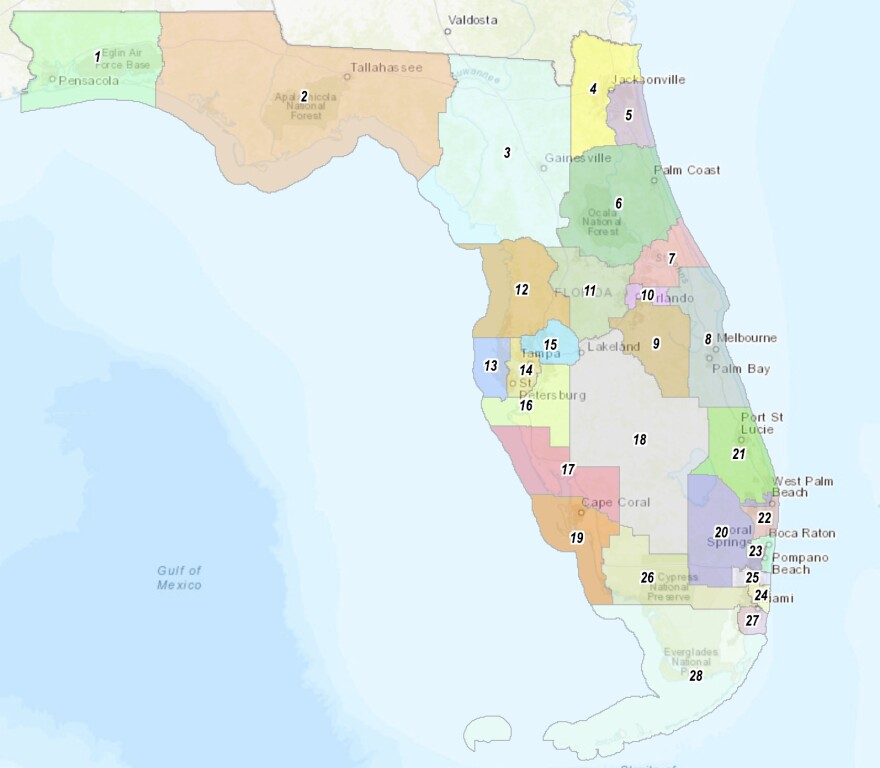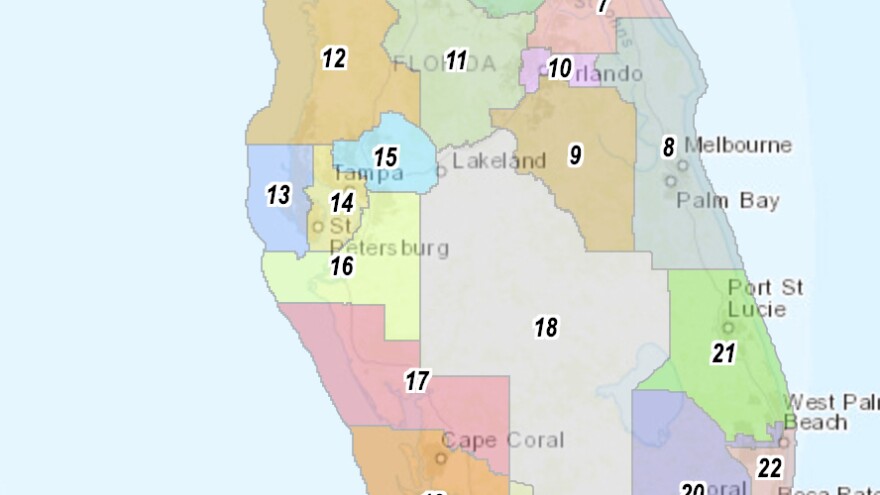The new congressional maps proposed by Gov. Ron DeSantis and approved during last month's special legislative session will mean big changes for voters across the greater Tampa Bay region.
Among the changes, St. Petersburg will now be represented by two lawmakers instead of one. Democrat Kathy Castor’s District 14 will now also include part of St. Petersburg.
During a recent episode of Florida Matters, host Matthew Peddie spoke with longtime Tampa Bay political reporter William March about what the new maps will mean for voters across the area, how they will affect voter turnout, how St. Petersburg now having two representatives in Congress will impact the city, and the potential makeup of the new 15th district.
Here is an excerpt of Peddie's interview with March.
Listen to the full episode here
Matthew Peddie: Let's talk a little bit about the Tampa/St. Petersburg area. Gov. DeSantis, his map splits St. Petersburg, it makes some toss-up districts, including the 13th — currently held by Charlie Crist — less competitive and more Republican. William, what does this mean for St. Pete?

William March: One thing that it means is that the city, as a city, is likely to have two representatives in Congress instead of one, and there's a good chance that they'll have bipartisan representation because Kathy Castor of Tampa, a Democrat, will have part of the city and the map almost guarantees her re-election. The other part of the city goes into what is a potential swing district, but with a pretty significant Republican lean. That's the district that Charlie Crist holds now; he's leaving it open to run for governor. There are three Democrats and five Republican contenders for that district. So if a Republican wins there, then St. Pete could have two representatives in Congress — one Republican on the west side of 34th Street, one Democrat on the east side. You could imagine that that could actually provide the city more effective representation to members, one on each side of the aisle. Nonetheless, city officials, local government officials, often dislike having to split their attention between two different members of Congress. When they want something from Washington, they often prefer to have just a single point of contact, a single representative, partly because it gives them more influence over that representative.
Peddie: I wonder, too, about the polarized nature of politics in Washington. Right now, whether that may also make it a little more difficult. If you have that bipartisan representation, it may not necessarily be easy to get things done.
March: If the city needs something from Washington, and if they can get both a Republican and a Democrat who represent them to go along with it, it might make it easier to get something done. On the other hand, it might make it harder for them to be able to say we have unanimous support for our idea from our delegation, because the delegation itself will be split ideologically.
Peddie: Is St. Petersburg, traditionally, a high turnout city?
March: I don't think it's higher than normal. I've never researched that question. It's, I think, becoming higher turnout, as it becomes more upscale socioeconomically.
Peddie: I wonder, though, that these new maps, what impact do you think they might have, if any, on turnout?
March: Generally speaking, when you have a competitive race, you get higher turnout. Overall, statewide, these maps are going to lead to less competitive races, more safe seats, and therefore more political polarization. For example, as we said, Kathy Castor is almost certain to end up representing the eastern side of St. Pete because she's guaranteed re-election. And that part of St. Pete is now in her district. And the other side, you're likely to see a very competitive race for the seat now held by Charlie Crist. So you're likely to see a highly competitive, hard-fought race there that will drum up a lot of voter interest.
Peddie: One of the complaints that we've had, one of the words we heard thrown around during the special session, was this notion of packing. Can you just talk us through a little bit about what what's going on there and whether there's some merit to that claim from Democrats that these new districts are packing Democrats in a certain area and that's to their disadvantage?
March: Oh, absolutely. there's no better example really than than the Kathy Castor seat from Tampa that we've been talking about. The reason that it goes across the bay and takes in part of St. Petersburg, is to get a bunch of Democratic voters out of the district that Charlie Crist holds now, the St. Petersburg base district. Essentially they're using Castor's district as a Democratic sink to hold all the Democratic voters, so that all the districts around it will be more Republican. And that's been the case since the redistricting that was done in 1990. Ten years ago, the courts ruled that it was illegal under fair districts for Castor's district to go across the bay to take those Democratic voters. And that's why as of right now, before this new map goes into effect, Castor's district is all located in Hillsborough County.
Peddie: There's also a new seat in the Tampa Bay region because of changes in the census. The 15th district includes parts of Tampa, Plant City, Zephyrhills, a bit of Polk County as well. On the face of it, William, how does this district lean?
March: It's definitely a swing district, but it leans Republican. That district is going to be called District 15. Like I think you said, it takes in northeastern Hillsborough County plus Zephyrhills up in Pasco County, plus part of Lakeland and Polk County, and a little bit of Lake County. In 2020, it voted 51 to 48% for Trump. So it's likely to be a swing district, but in what's looking like a bad year for Democrats at the polls, I would bet that it will go Republican long term. And again, this is an example of using Castor's district in Tampa to concentrate Democratic voters in one place so that the surrounding districts are more Republican.





